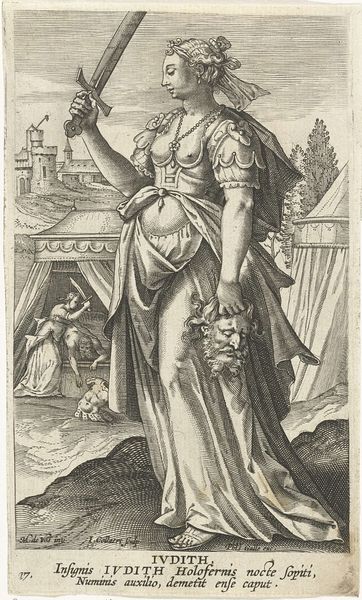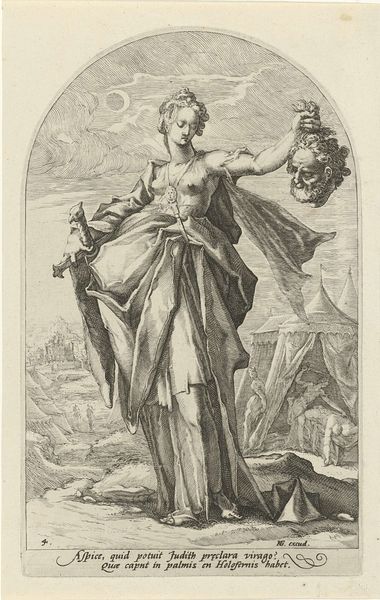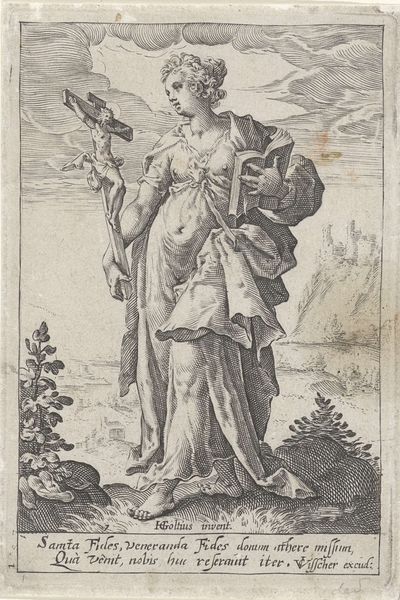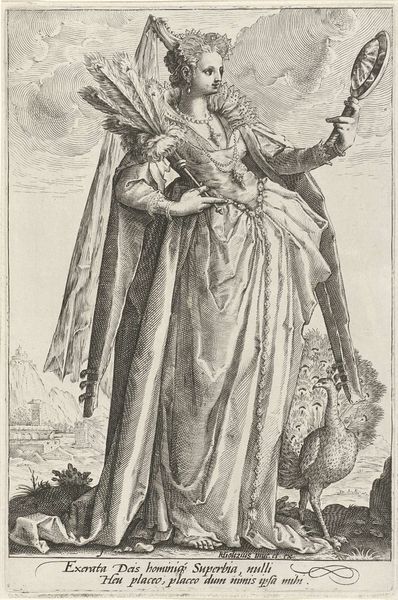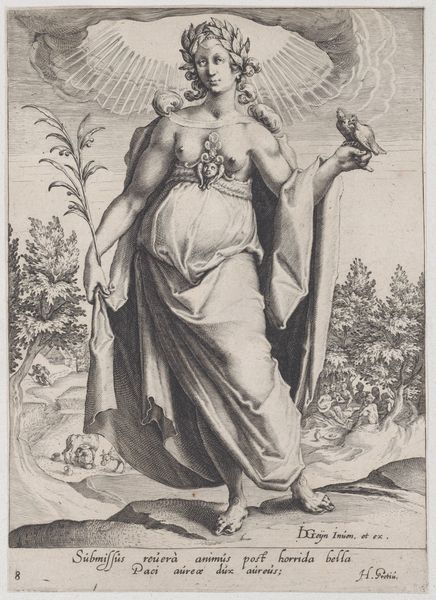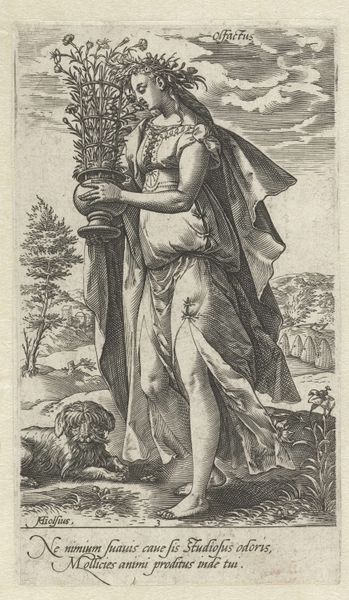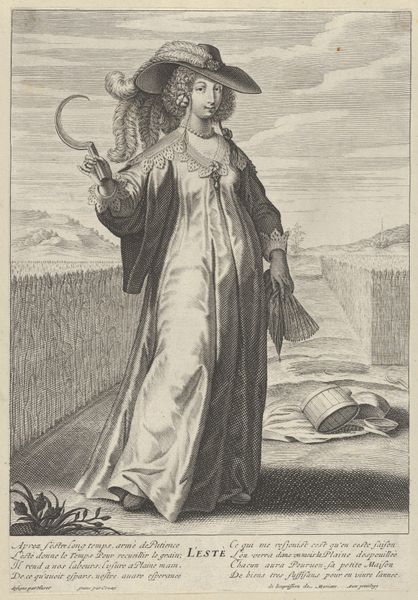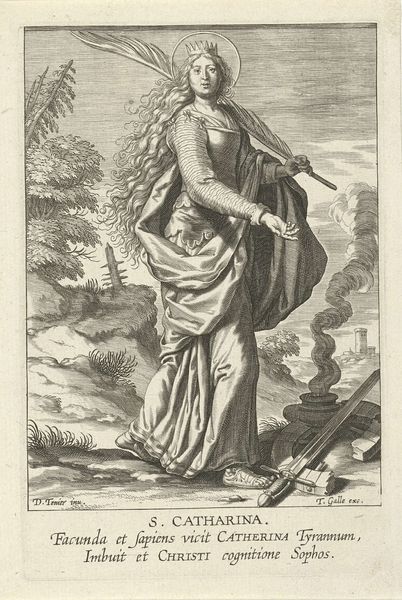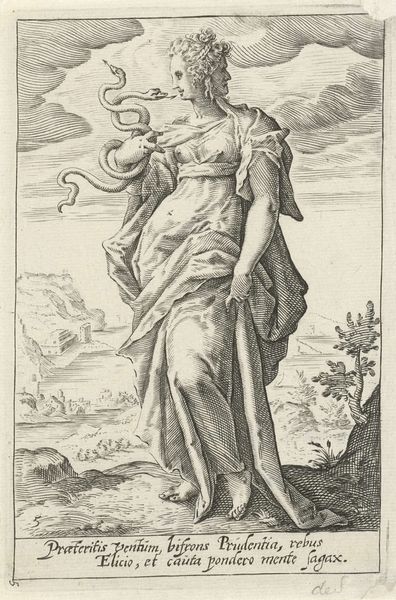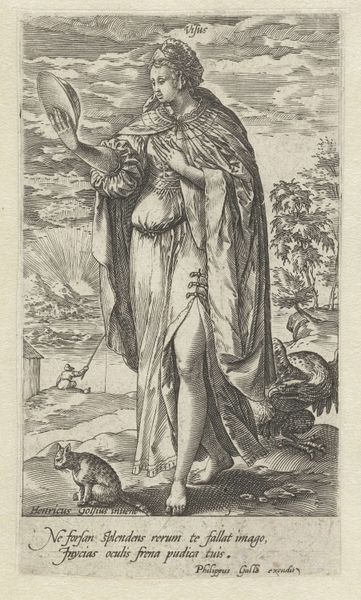
print, engraving
#
portrait
# print
#
pen illustration
#
sketch book
#
figuration
#
11_renaissance
#
line
#
history-painting
#
northern-renaissance
#
engraving
Dimensions: height 303 mm, width 202 mm
Copyright: Rijks Museum: Open Domain
Curator: This elegant engraving, dating back to 1550, is titled "Rhetorica" and comes to us from the hand of Hieronymus Cock. It’s currently held at the Rijksmuseum. Editor: My first impression is one of classical serenity. The figure is so gracefully posed, though her clothing and environment seem less important than the statement she is making. The linear quality really emphasizes form and idealized beauty, yet somehow the medium makes it appear austere. Curator: Indeed. Cock’s work invites us to explore the Renaissance fascination with classical ideals and the role of rhetoric within societal structures. Note the winged helmet and caduceus – clearly alluding to Mercury, messenger of the gods, and the embodiment of eloquence and persuasive communication. Rhetoric, here personified, uses all forms of communication at its disposal. Editor: And what's so striking is the *method* by which he delivers his message. As a print, “Rhetorica” makes rhetorical devices available and mobile. A single engraving would probably become a model and method reproduced across borders and contexts; the material qualities here influence consumption. Curator: Precisely. Cock cleverly weaves together various thematic threads, all within the framework of Renaissance Humanism, making art accessible while engaging viewers with powerful imagery. Her posture, gazing outwards, speaks to agency and social positioning that begs critical reevaluation now. Rhetorica challenges us as interpreters of the world. Editor: It's quite powerful to consider how this print functioned as both an aesthetic object *and* a tool, designed to influence thinking on communication methods. To what extent was its labor seen, valued? Rhetoric here is seen as a classical ideal, while its means are commercial and industrial. Curator: Those juxtapositions illuminate what makes art historically potent: its capacity to be reinterpreted and recontextualized across temporal divides. In revisiting Hieronymus Cock, we can see more of that dialectic relationship. Editor: Absolutely. Analyzing the tangible history provides context for contemporary critical engagement.
Comments
No comments
Be the first to comment and join the conversation on the ultimate creative platform.
